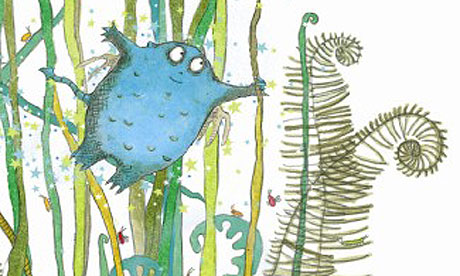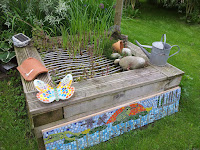Our Olympic Rings put on a fabulously fragrant show over the summer, but it was finally time to clear the bed out ready for our winter planting.

Bradford Council Landscape Division kindly provided us with 500 winter pansies for us to use to make our winter display.
We have spelled out the word ‘Fagley’ in pale yellow pansies in the centre of the bed. Children from Year One and Year Six joined me to plant some gorgeous deep blue pansies to frame the edge of the bed.
The children had to work out how many flowers they would have each to plant. We had two trays of flowers each containing 28 plants. We wanted to share the two trays of flowers between the four corners of the flowerbed. Can you work out how many flowers we had to plant in each corner?
We also had huge fun racing to collect dozens of bags of leaves which will be turned into leaf mulch to feed our vegetable beds, fruit trees and flowering borders.
Make sure you take a look at our ‘Fagley’ flowerbed next time you are passing the school entrance and if you have any suggestions for future planting plans, we would love to hear them.


The Year 4 and 6 Garden Teams joined me outside on Friday to continue planting our Woodland Trust hedging shrubs. Chelsea and Abdullah worked together to plant some blackthorn (prunus spinosa) and elder (sambucus nigra) shrubs. These shrubs both produce wonderful dark berries which will provide a valuable food source for birds.
Marceli and Jack added some winter pansies and dog rose plants to our butterfly border, whilst Charlotte and Abby planted dogwood (cornus) down the edge of the entrance path. The new growth of the dogwood tree is a spectacularly rich red colour making it a valuable addition to a winter planting scheme. In the Springtime, the crimson stems can be pruned and used for weaving projects.

Bradford Council Landscape Division kindly provided us with 500 winter pansies for us to use to make our winter display.
We have spelled out the word ‘Fagley’ in pale yellow pansies in the centre of the bed. Children from Year One and Year Six joined me to plant some gorgeous deep blue pansies to frame the edge of the bed.
The children had to work out how many flowers they would have each to plant. We had two trays of flowers each containing 28 plants. We wanted to share the two trays of flowers between the four corners of the flowerbed. Can you work out how many flowers we had to plant in each corner?
We also had huge fun racing to collect dozens of bags of leaves which will be turned into leaf mulch to feed our vegetable beds, fruit trees and flowering borders.
Make sure you take a look at our ‘Fagley’ flowerbed next time you are passing the school entrance and if you have any suggestions for future planting plans, we would love to hear them.


The Year 4 and 6 Garden Teams joined me outside on Friday to continue planting our Woodland Trust hedging shrubs. Chelsea and Abdullah worked together to plant some blackthorn (prunus spinosa) and elder (sambucus nigra) shrubs. These shrubs both produce wonderful dark berries which will provide a valuable food source for birds.
Marceli and Jack added some winter pansies and dog rose plants to our butterfly border, whilst Charlotte and Abby planted dogwood (cornus) down the edge of the entrance path. The new growth of the dogwood tree is a spectacularly rich red colour making it a valuable addition to a winter planting scheme. In the Springtime, the crimson stems can be pruned and used for weaving projects.





.jpg)
.jpg)
.jpg)
.jpg)





















































